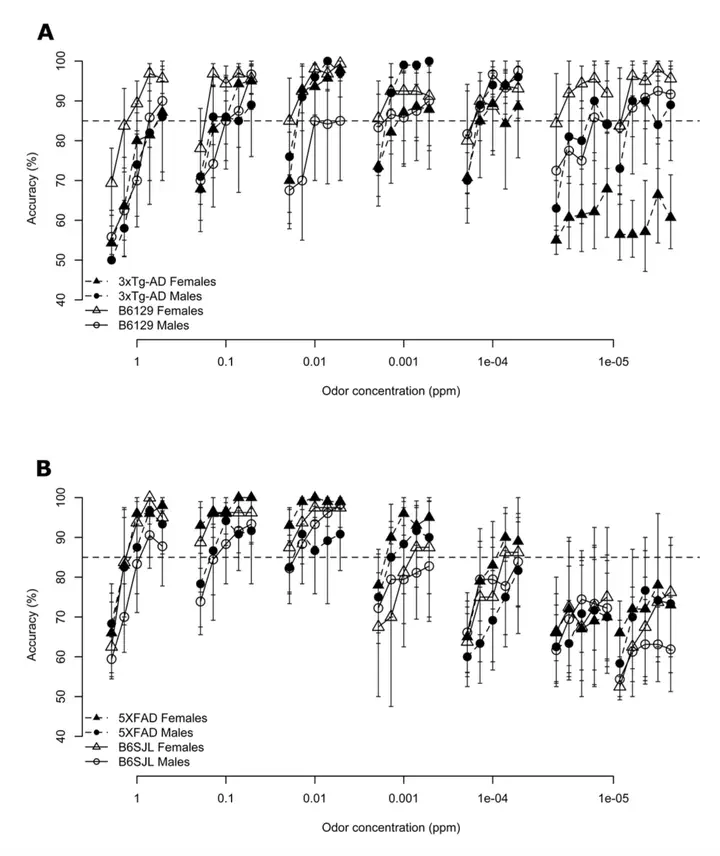Sex and Genotype Differences in Odor Detection in the 3×Tg-AD and 5XFAD Mouse Models of Alzheimer's Disease at 6 Months of Age

Abstract
Deficits in odor identification and detection are early symptoms of Alzheimer’s disease (AD). Two transgenic mouse models of AD, the 5XFAD and the 3×Tg-AD mice and their wildtype controls, were assessed for olfactory detection with decreasing concentrations of ethyl acetate in a go no-go operant olfactometer task at 6 months of age. For both the 5XFAD and their B6SJLF1 wildtype littermates, females made fewer errors in detecting the ethyl acetate than males on all but the lowest odor concentrations. Female 5XFAD mice performed slightly better than their female wildtype littermates on the higher odor concentrations, though not at the lowest concentration. The 3×Tg-AD females showed decreased olfactory detection compared with their wildtype B6129S1 controls, whereas there was no difference in the males. Therefore, although the 5XFAD mice showed no olfactory detection deficits, female 3×Tg-AD mice had impaired olfactory detection at low odor concentrations but males did not. This difference in odor detection should be considered in studies of olfactory learning and memory, as differences in performance may be due to sensory rather than cognitive factors, though detection seems unimpaired at high odor concentrations.